My music is the spiritual expression of what I am — my faith, my knowledge, my being...
John Coltrane
This was quite a while ago, but I've received e-mails about short series of articles I wrote two years ago. I had always meant to write four, and the messages have been just the prod I needed!
I've looked at a drawing that John Coltrane made and gave to Yusef Lateef, which was then reproduced for Lateef's Repository of Scales and Melodic Patterns. In looking at the diagram, I initially attempted to not interpret it, but just look at it and notice aspects of it; and from noticing features, come to some ideas about why Coltrane drew it and what it meant to him, based on the things that he said, wrote and believed; and also to help think about other aspects of Coltrane's work.
The first post examined how he may have drawn the diagram. The second post briefly mentioned Lateef possibly annotating the diagram; and described a three-dimensional representation of the diagram. The third was a summary of Coltrane's recorded thinking, learning, and writing in his middle period. This post will be about using all the information gathered so far and imagining different ways of seeing Coltrane's explorations.
I got many great responses to the previous posts. One from Robert Mitchell talked about his time with Steve Coleman:
[...] My moment with Coleman involved the use of similar charts. Not quite as dense—but as you can imagine, most of the musicians were having their brains expanded by having to take on a system before getting to play....
Those charts were... on the look of this... derived from Coltrane, and I think Henry Threadgill's experiments. They were used to represent the movement of stars. So although there were note names round the circumference too, I think they represented different parts of the sky. [...]
It's a version of things that hark back to when younger cultures had a more spiritual/visceral connection to sound and its effects. Coleman did say he wanted to play the sky at night like a chart. Coltrane wanted to make it rain, and the ancient folks actually could do physical things with sound (and people wonder why the contribution of these icons are so important!).
Robert Mitchell, via e-mail
Dr Mick Wright from Newcastle University wrote to correct me on a naming of a scale in Part III, which I rectified (what I had called the harmonic major was in fact the "melodic major"); only to then get it wrong AGAIN, but this time be corrected on the mode by Lee Tomboulian. Either way, the scale then led me to think about the names of the scales from other cultures.
It's not unreasonable to think that Coltrane would have more than one approach to a single progression. Every account of him points to his studiousness and intelligence; he wrote things down and he read widely to continue his quest for spiritual expression. In Part III, I talk about the possibility of describing the minor third-perfect fourth movement in ways different from the "three tonic" system. One of those ways is to think of alterations of descending major seconds, which I began thinking about three years ago or so. But this is based on what I heard in the music and not on anything Coltrane said. Another is in the comments of Part II, where I created a model of the drawing that could move.
The idea of a compound scale takes in what Coltrane may have developed through his times with Sandole, as well as binding the Asiatic studies of both Lateef and Coltrane to their music. The natural minor scale is equivalent to Natabhairavi in South Indian classical music; the "melodic major" (the fifth mode of the ascending melodic minor) is Charukesi, and both scales are devotional in nature. Coltrane's interest was in North Indian music (most famously through Ravi Shankar, although they did not meet until 1964), and Natabhairavi is equivalent to the Asavari raag; Charukesi has no equivalent, but it is popular in North Indian music. By 1958, Coltrane had probably written Giant Steps (read my contrafacts essay for more details). We don't know when Coltrane formulated the diagram; only that he gave it to Lateef in 1960.
Going back to the diagram, we can see that the two scales have two enharmonic points; one at the third degree of each scale, and one at the sixth. If we transliterate Natabhairavi to d♭ and combine it with Charukesi mapped from c, we can see an intersection that contains e and a♭. Natabhairavi is the top line, circled in blue; Charukesi is circled in red.
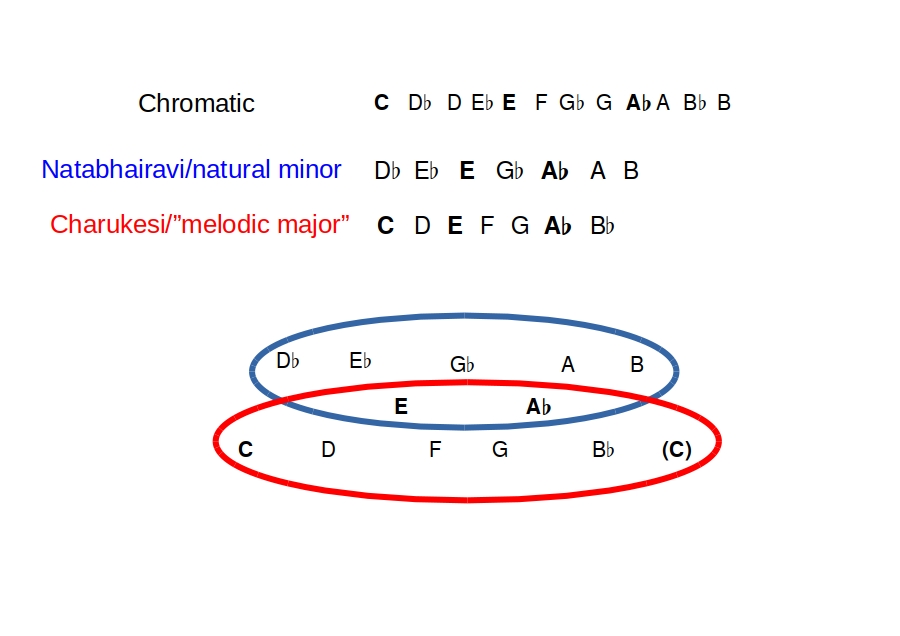
Arranged in chromatic order, the first, fourth and seventh degrees of Natabhairavi are aligned with the degrees from Charukesi in a way that matches the segment 3–4 on the original diagram.
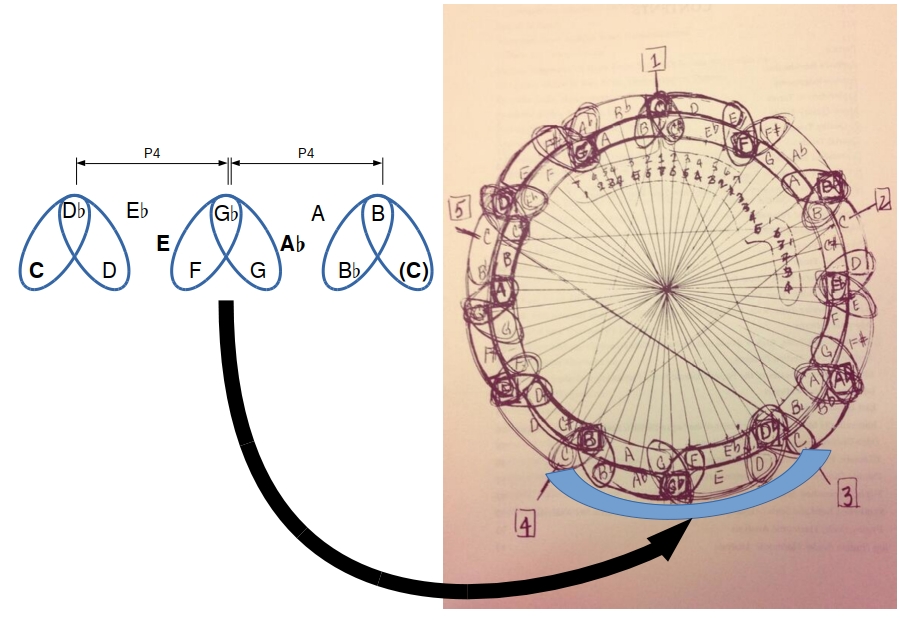
This is the "unwrapping" of the circle I talked about in Part II. If the compound scale is expressed as a circle, the interval pattern occurs within itself three times, a major third apart.
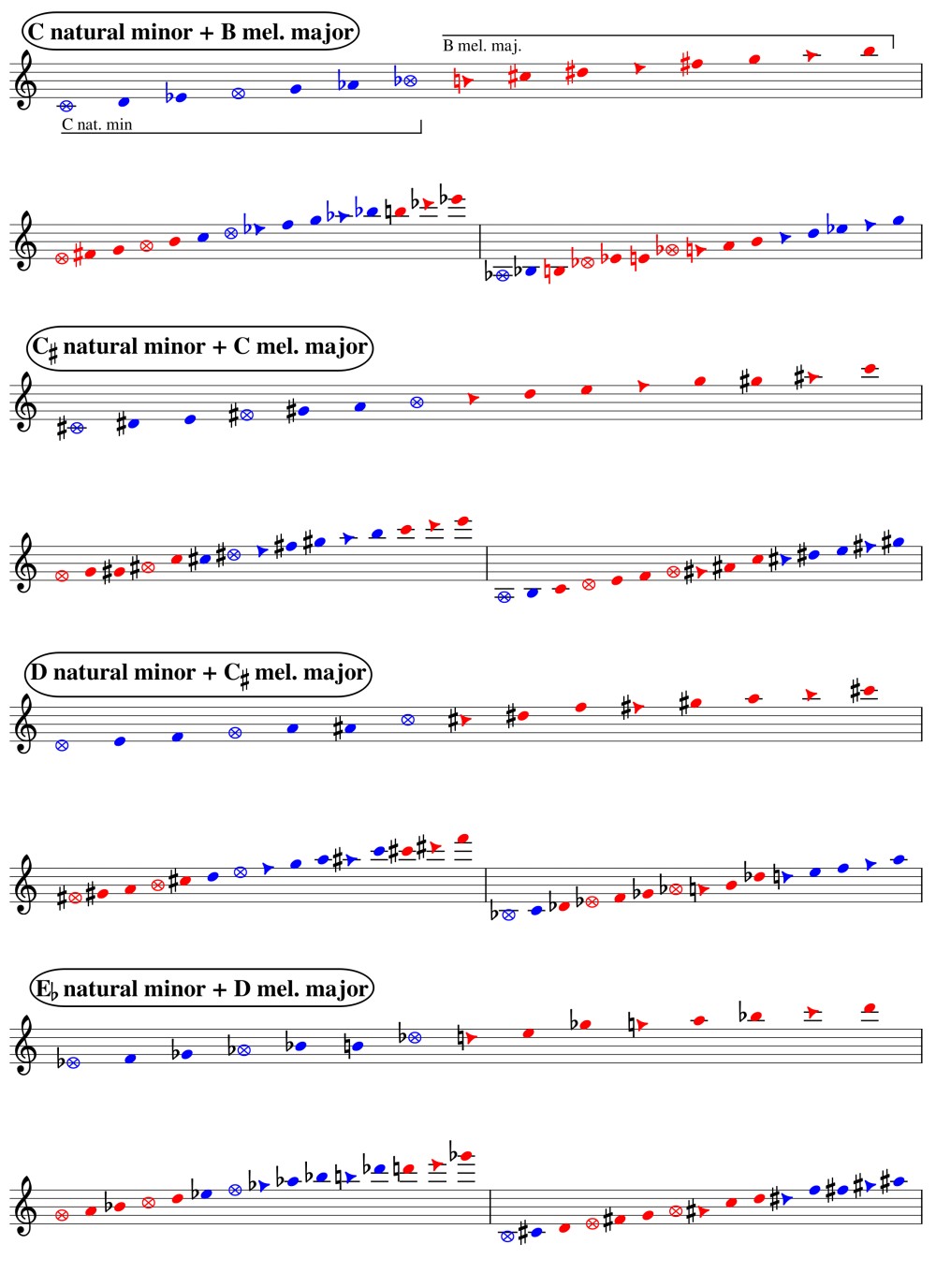
Each set of three scales (and their sequence of perfect fourths) coincides with Matt Ratcliffe's interpretative diagram of the three tonic system.
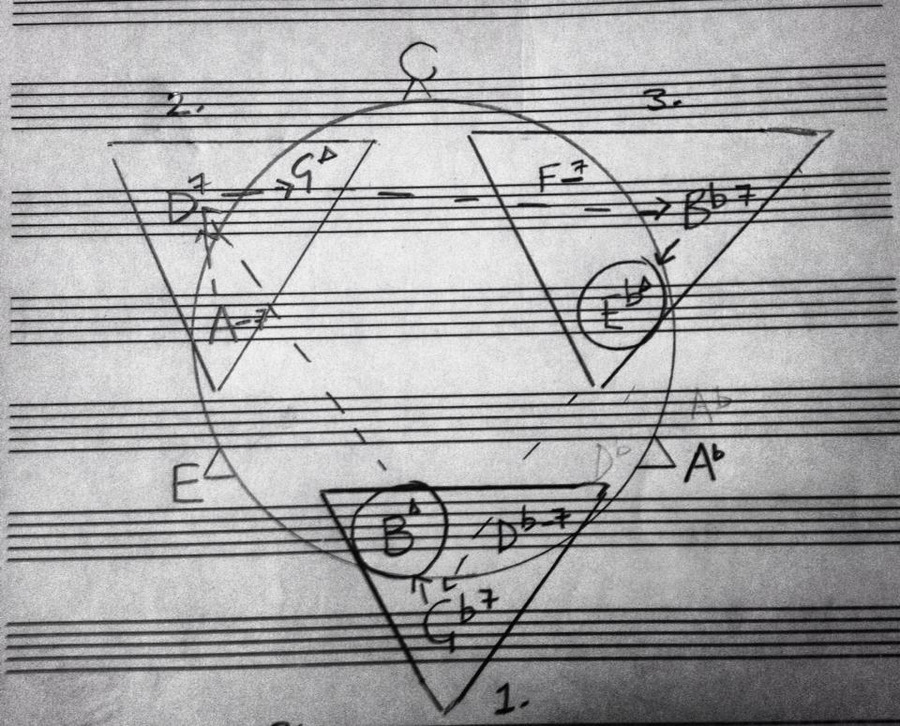
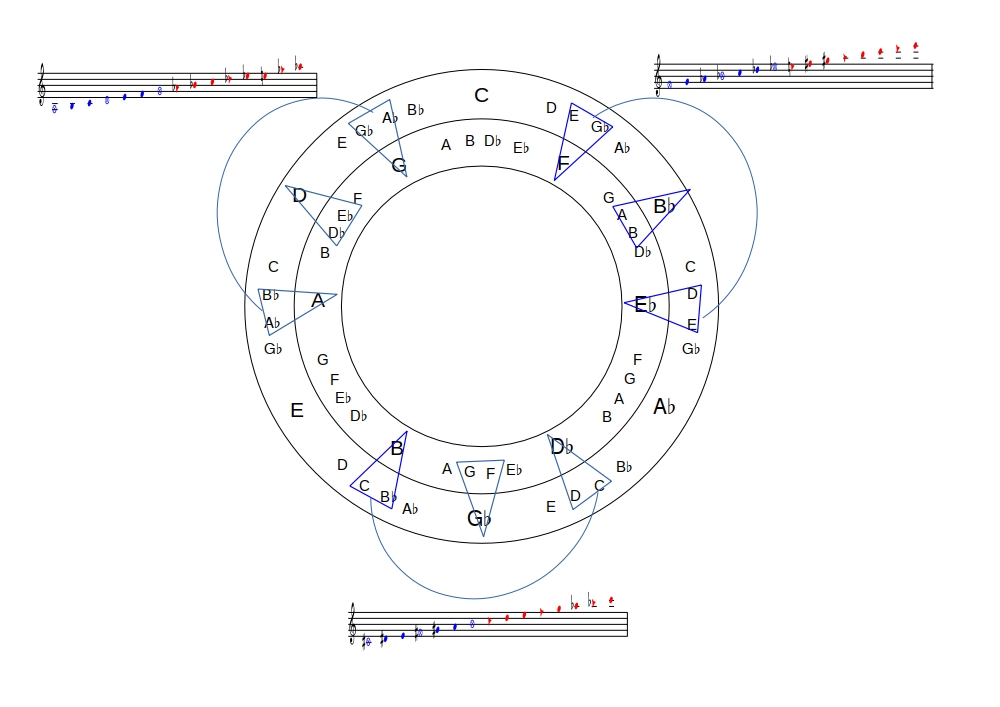
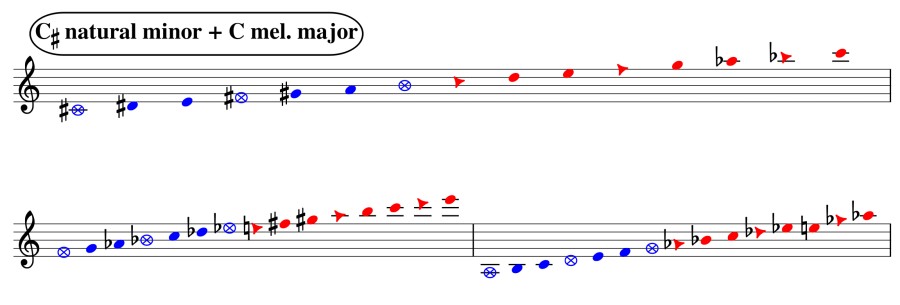
Thus, by using what we know about Coltrane's interests in Asiatic philosophies and arts, we can imagine theories and representations for his middle period music that have a stronger context and connection to his later developments and spirituality. It isn't possible to say that Coltrane used the diagram at all; but exploring it in relation to what he was saying at the time has led to more understanding and appreciation of his music and life.
comments (1)
Sign in to comment using almost any profile.